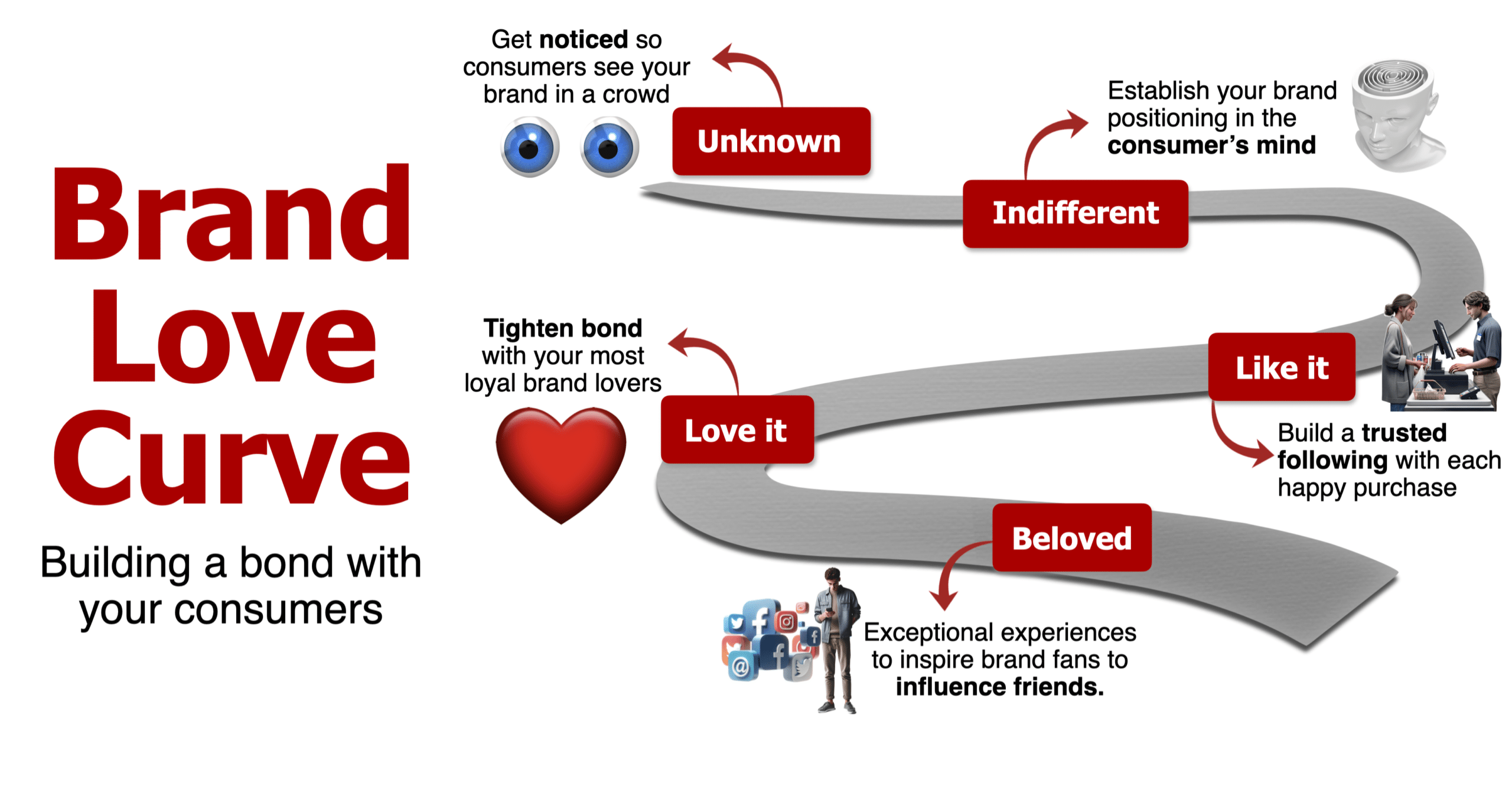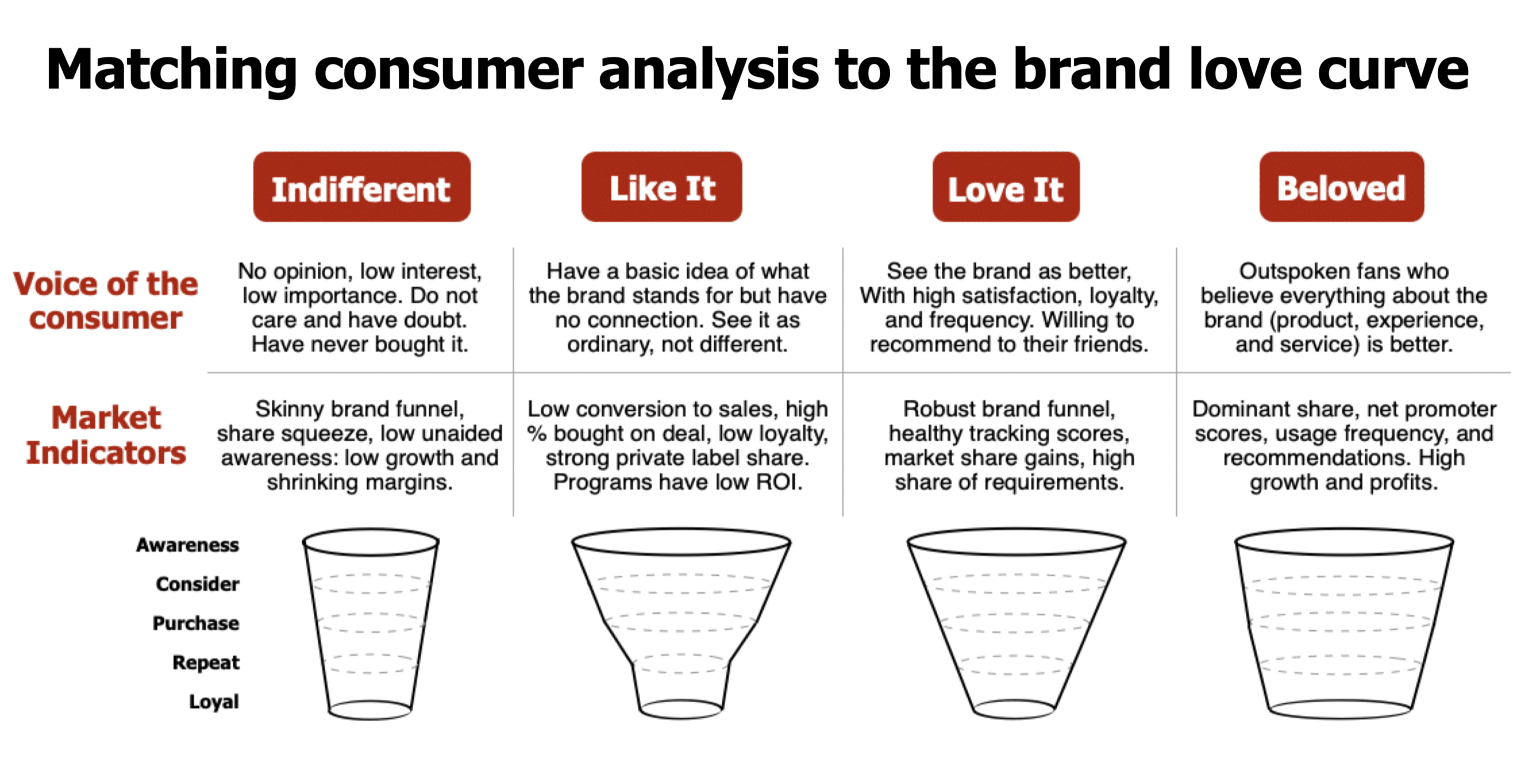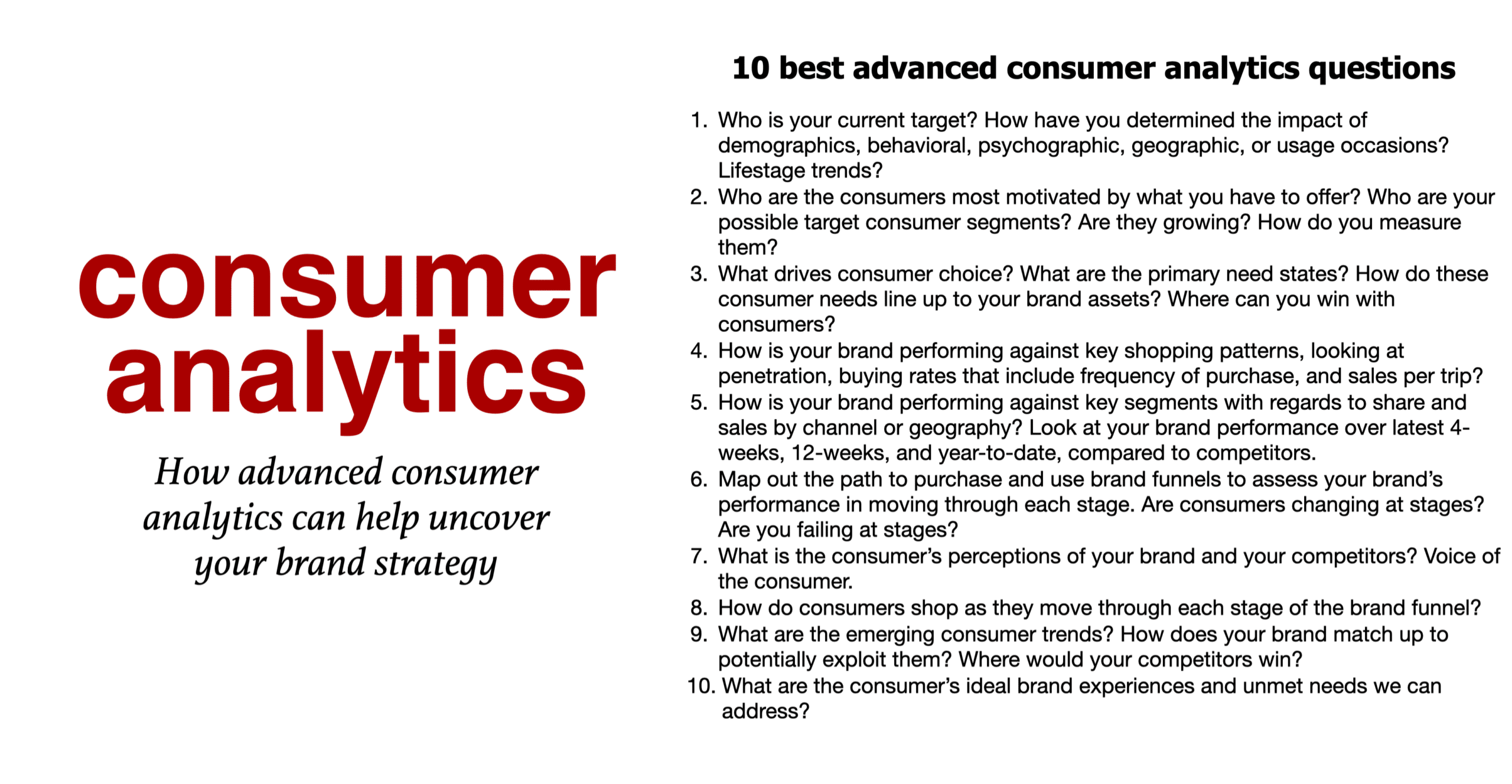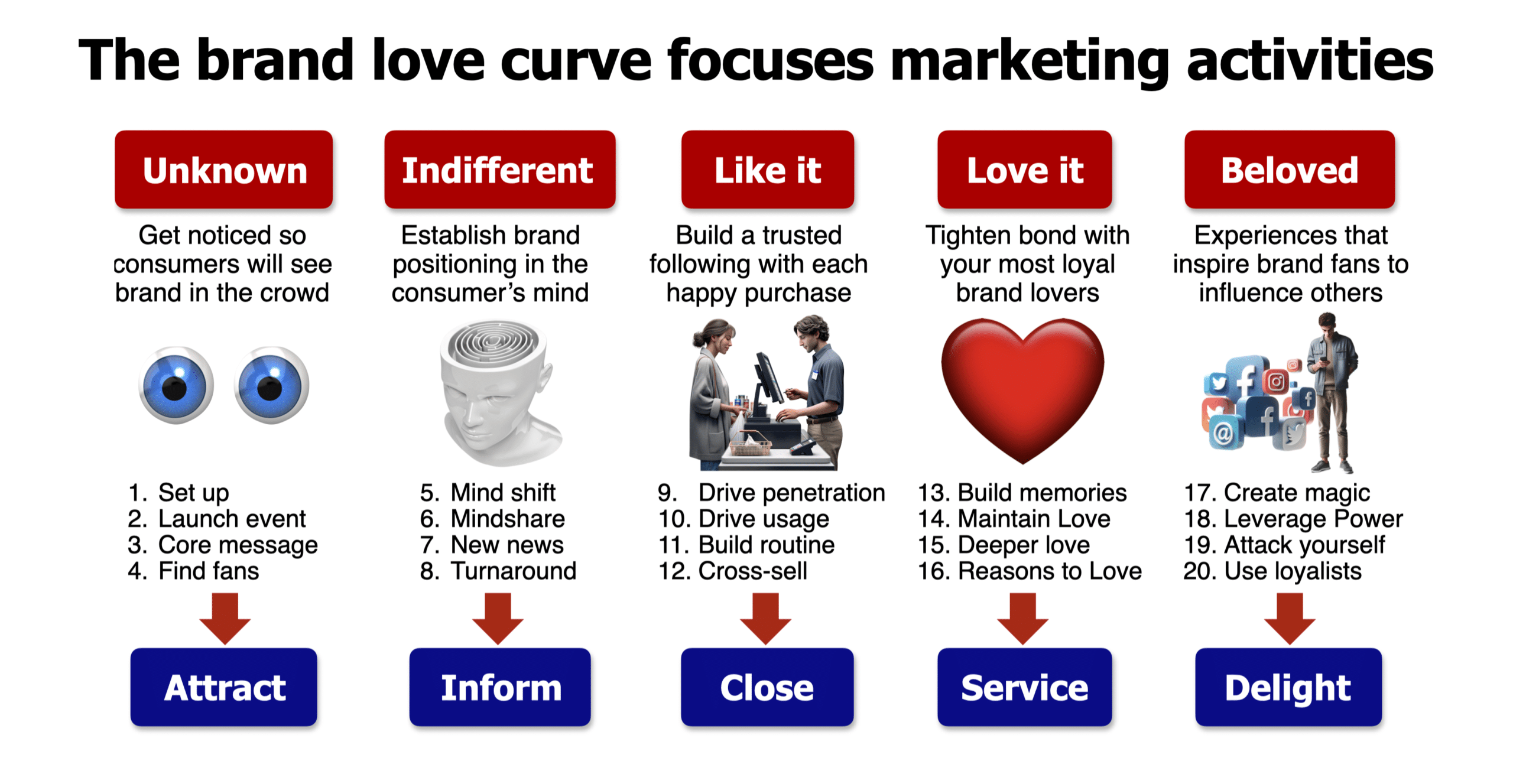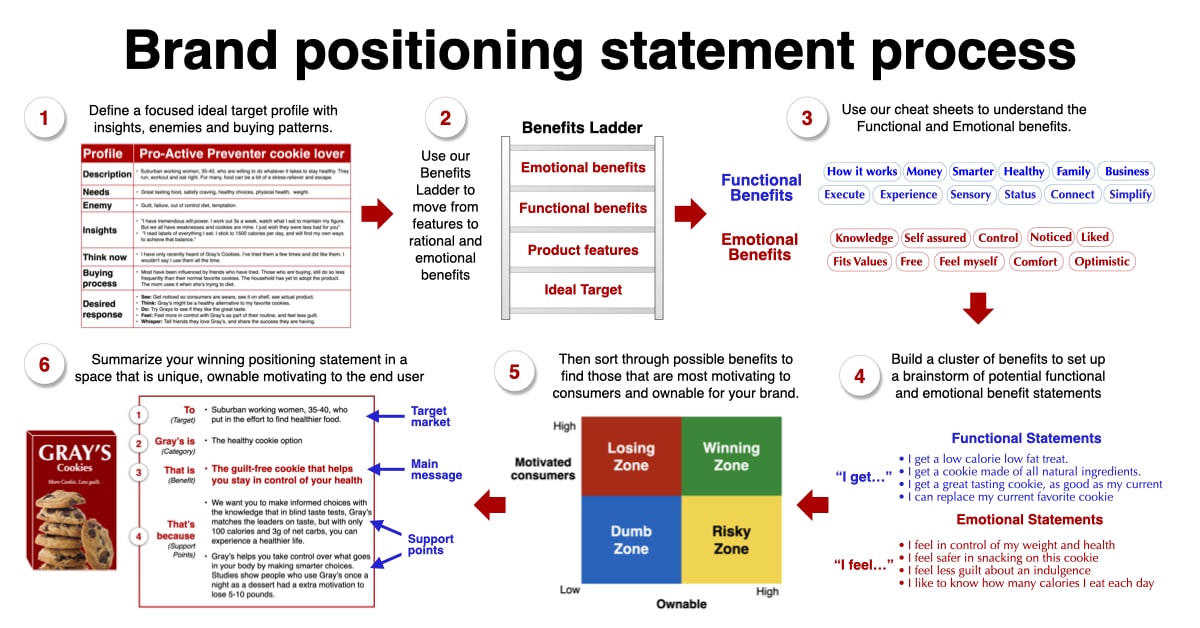In today’s crowded marketplace, standing out is a necessity. However, many brands remain lost in the noise, indistinguishable from competitors. These are indifferent brands—brands that behave more like commodities than unique entities. They struggle with low awareness, low purchase rates, and even lower brand loyalty. But with the right strategies, even the most indifferent brands can revive and reposition themselves to break through market clutter using brand differentiation.
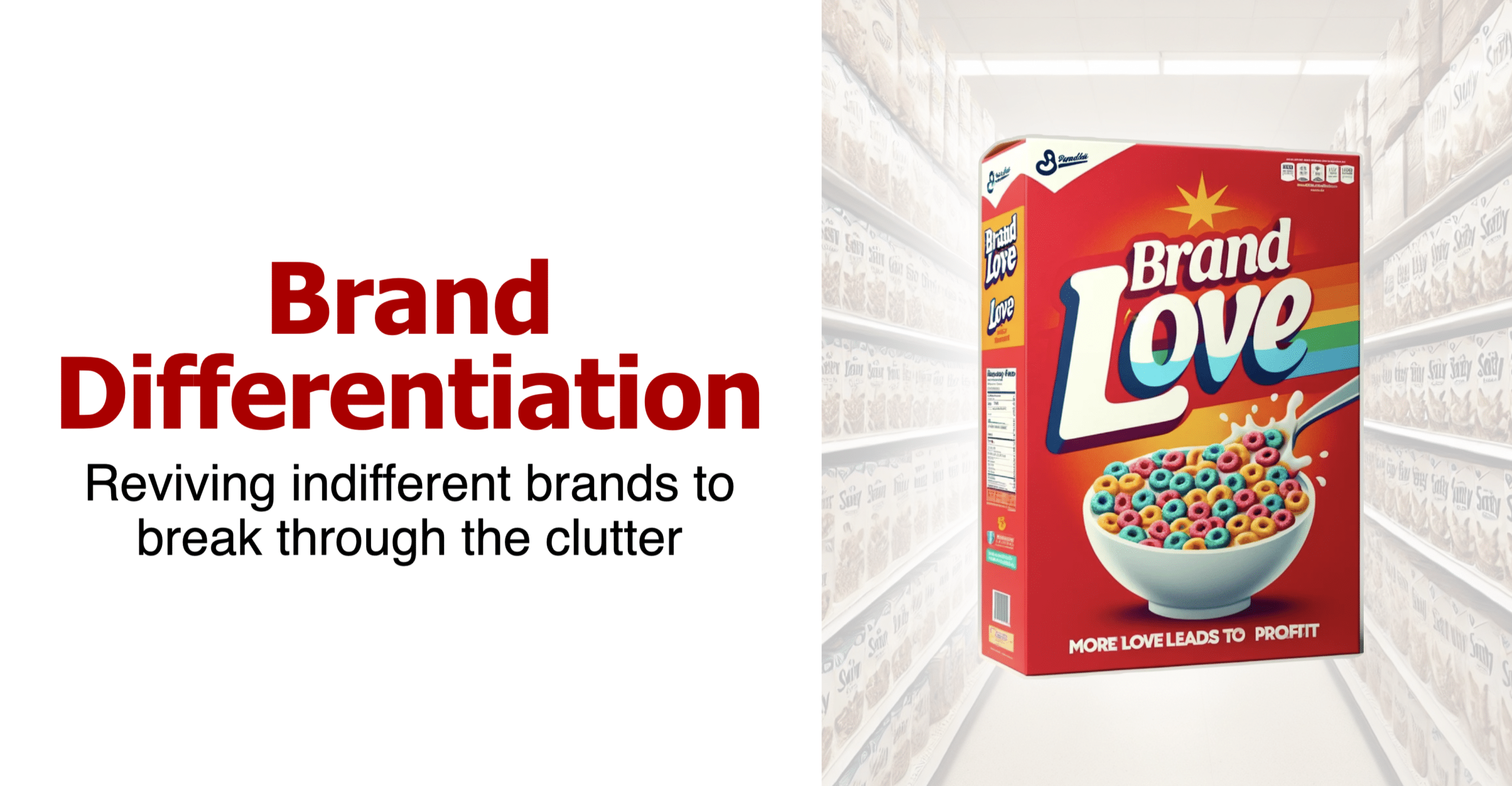
The brand love curve
Add Your Heading Text Here
I first came up with the idea of a brand love curve when I ran a marketing department with 15 different consumer brands, which exhibited various degrees of success. Honestly, it was hard for me to keep track of where each brand stood. I did not want to apply a one-size-fits-all strategy to brands with dramatically different needs. I could have used some traditional matrix with market share versus category growth rates or stuck with revenue size versus margin rates.
Every day on the job, I noticed brands that had created a stronger bond with their consumer outperformed brands that lacked such a close connection. I started to refer to the high-performance brands as “beloved” because I could see how emotionally engaged consumers were with the brand.
At the other end of the scale, I referred to the inferior performance brands as “indifferent” because consumers did not care about them. They failed to stand for anything in the consumer’s mind; they were not better, different, or cheaper. I could see how these brands were unable to create any connection with their consumers, and they faced massive declines.
Everything worked better and easier for beloved brands. New product launches were more impactful because the brand’s loyal consumers were automatically curious about what was new. Retailers gave these beloved brands preferential treatment because they knew their consumers wanted them.
To illustrate, click on the image above to better understand brand differentiation.
Why does brand love matter
Brand building starts with cultivating close relationships with consumers. Today’s best brands follow a very similar path to the rituals of a personal courtship.
Through the eyes of consumers, brands start as complete strangers, randomly purchased a few times without much thought. They become acquaintances and move into something similar to a trusted friendship when the brand successfully delivers on expectations.
As consumers see a consistent experience and trust, they open up, and the romance begins.
The consumer allows their emotions to take over; without knowing, they start to love the brand. As the brand weaves itself into the best moments of the consumer’s life, the consumer becomes an outspoken fan, an advocate, and one of the many brand lovers who cherish their relationship with the brand.
As long as the brand delivers on the excitement of the original promise that attracted the consumer on their first encounter, it moves into a position where the consumer sees it as a forever love.
To replicate how brand building matches up with building a relationship, I created the brand love curve, which outlines how consumers move through five stages: unknown, indifferent, like it, love it, and onto the beloved brand status.
Our brand love curve steers your consumer strategy
Unknown Brands
For new brands, they were completely “unknown” to consumers. Consumers would walk past without even looking unless there were compelling messages. To achieve some success, the priority for these brands is to get noticed within the clutter of the market.
Indifferent Brands
At the “indifferent” stage, consumers feel O.K. about the brand, similar to how they usually feel about commodities like fruits and vegetables. These brands satisfy the consumer’s basic needs. Consumers will only buy the brand when it is on sale but switch back to their other brand choice when it is not. Make your brand more than just a commodity. Brand differentiation is essential. Brands need to be better, different, or cheaper. Otherwise, they will not be around long, and you will waste your investment.
Like It Brands
Brands that reach the “like it” stage have achieved a significant milestone in their business journey. However, they often overlook a crucial element: emotional connection. While their products may be seen as logical and functional choices, the lack of emotional appeal leaves the purchase decision to chance. It’s time to embed emotions into brand differentiation, a strategy that can significantly enhance consumer loyalty.
Love It Brands
Brands at the “love it” stage start to see more emotionally engaged consumers. The rule of love you must follow is that consumers must love the brand before you can tell them you love them. Consumers see the brand as a favorite choice, usually connected to a favorite part of their day. They are loyal and build the brand into a routine. These brands must also find a way to demonstrate their love toward consumers and continue to tighten the bond with their most loyal brand lovers.
Beloved Brands
The “beloved brand” stage is where the brand becomes iconic, with a core base of brand lovers who cherish and defend it. These consumers see the brand as a personal choice, a badge they proudly hold or wear on their feet. At the beloved stage, brands must create magical experiences that inspire brand lovers to share with their friends.
Matching consumer analysis to the brand love curve
You can begin using your consumer tracking, brand funnel, market share, and the voice of the consumer to help explain where your brand sits on the brand love curve.
- Indifferent brands have skinny funnels, starting with inferior awareness scores. Consumers have little to no opinion. Concerning performance, you will see low sales and poor margins. Your brand plan for indifferent brands should increase awareness and consideration to kickstart the funnel.
- Like-it brands have funnels that are solid at the top but quickly narrow at the purchase stage. Consumers see these brands as ordinary and purchase only on a deal. When they are not advertised or on sale, sales fall off dramatically. These brands must close potential leaks to build a loyal following behind happy experiences.
- Love-it brands have a robust funnel but may have a smaller leak at loyal. They have stronger growth and margins. Look for ways to feed the love and turn repeat purchases into a ritual or routine.
- Beloved brands have the most robust brand funnels and positive consumer views. These brands should continuously track their funnel and attack weaknesses before competitors exploit them. Also, it is time to leverage that brand love to influence others.
To illustrate, click on the image above to better understand brand differentiation.
What makes a brand indifferent?
Indifferent brands are often too product-focused. They fail to carve out a unique identity in the consumer’s mind. Their marketing strategies are usually generic, and their innovations offer little to no differentiation. Consequently, these brands rely heavily on price promotions to drive sales. This reliance leads to a margin squeeze and a cycle of low profitability. They lack power to negotiate favorable terms with retailers and often get overshadowed by more innovative competitors.
The consequences of indifference
When a brand fails to stand out, it suffers from a skinny brand funnel. At the top of this funnel, awareness is low. Fewer consumers even know the brand exists. Those who do know may not feel motivated to make a purchase, leading to low purchase rates. Even among purchasers, repeat buying is minimal, and brand loyalty is nearly non-existent.
This lack of brand equity makes it difficult to justify further marketing investments. Advertising campaigns yield poor tracking scores, and innovation efforts fail to gain traction. Without a clear brand idea or unique positioning, consumers have little reason to choose one brand over another. This leads to a cycle of declining relevance and profitability.
Breaking Free: The Need for Brand Differentiation
So, how can indifferent brands break free from this cycle? The answer lies in brand differentiation. A brand must establish a point of difference in the consumer’s mind—a reason for consumers to choose it over other options. This differentiation needs to resonate emotionally with the target audience.
Old Spice
For example, Old Spice differentiated itself through a creative campaign in 2010. The brand launched “The Man Your Man Could Smell Like,” which didn’t just promote a deodorant; it sold an idea—a vision of masculinity that was humorous and aspirational. This bold, tongue-in-cheek approach was a stark departure from the brand’s previous image. It immediately set Old Spice apart from its competitors. As a result, the brand saw a 125% increase in sales within six months of the campaign’s launch.
To illustrate, click the arrow button to view the Old Spice ad that illustrates brand differentiation.
Special K
Similarly, Special K reinvented itself from a bland diet cereal to a brand associated with empowerment and body positivity. The “What Will You Gain When You Lose?” campaign shifted the focus from weight loss to overall well-being. This repositioning allowed Special K to regain its relevance and reconnect with its audience on a deeper level. Through effective brand differentiation, both Old Spice and Special K successfully transformed from indifferent brands to beloved brands.
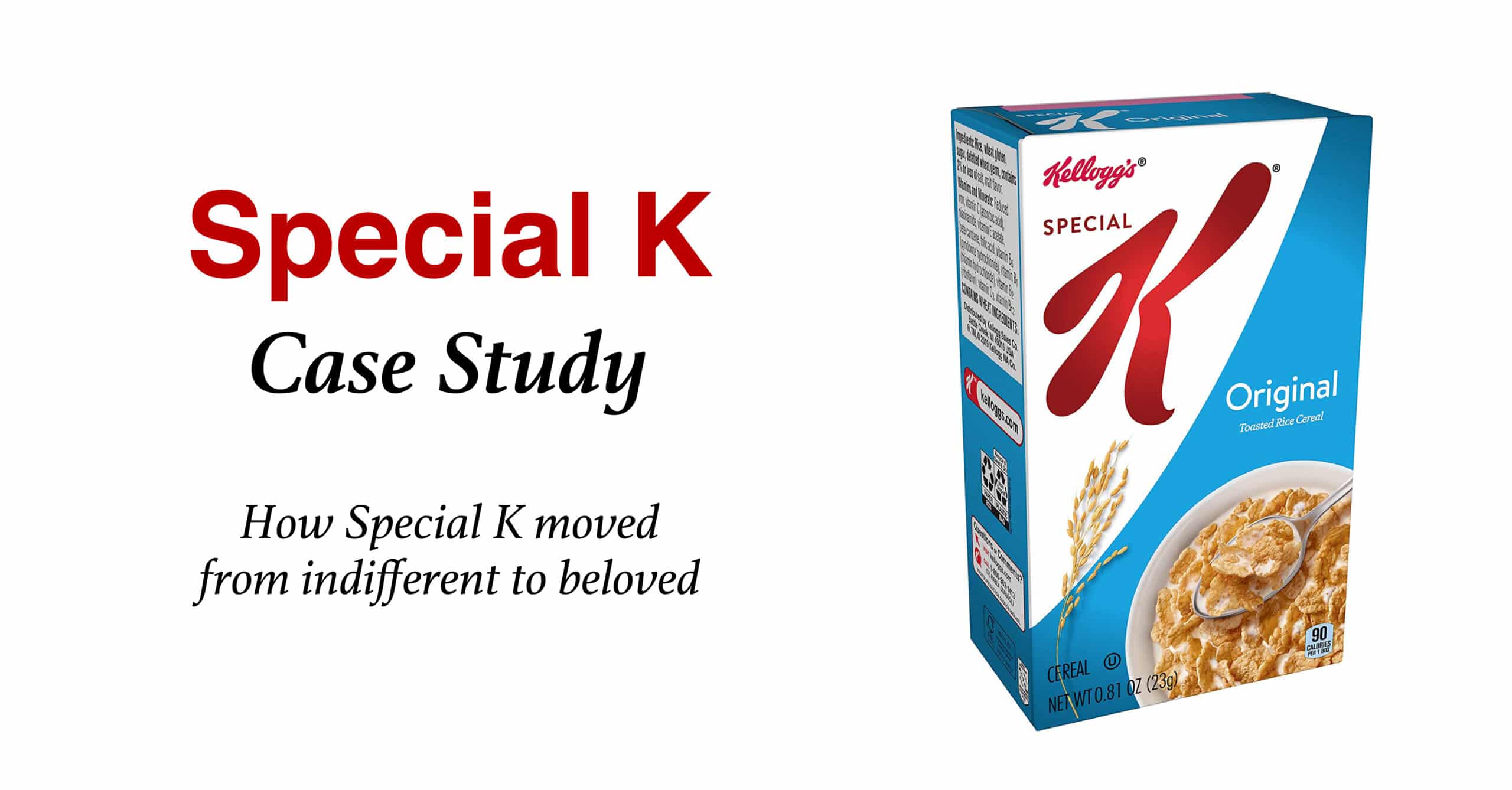
Game Plan for Indifferent Brands
Focus on Differentiation:
The first step is to highlight what makes your brand different. This could be a unique product feature, distinct personality, or compelling brand story. The key is to find something that resonates with your target audience and sets you apart from the competition.
- Example: In the crowded smartphone market, Apple differentiates itself not just through innovative technology but by creating a brand that represents premium quality, design elegance, and a seamless user experience. This differentiation allows Apple to command higher prices and foster deep brand loyalty.
Create a Strong Brand Idea:
Once you’ve identified your point of difference, the next step is to build a strong brand idea around it. This idea should be central to all your marketing efforts, from advertising to packaging to in-store displays. It should be simple, memorable, and emotionally resonant.
- Example: Dove’s “Real Beauty” campaign is a powerful example of a brand idea that resonates emotionally. By challenging traditional beauty standards and celebrating diversity, Dove has built a brand that stands for more than just soap—it’s about self-esteem and empowerment.
Infuse Passion and Risk:
Finally, indifferent brands need to be willing to take risks. Playing it safe won’t cut it in today’s competitive environment. Brands must infuse their marketing efforts with passion and creativity, even if it means stepping outside their comfort zone.
- Example: Patagonia is a brand that has taken significant risks by aligning itself with environmental activism. While this approach may alienate some consumers, it has also created a fiercely loyal customer base that shares the brand’s values.
Action Plan for turning around an Indifferent Brand
Mind Shift:
- It all starts with a change in mindset. Brands need to shift from a product-focused approach to a consumer-centric one. This means understanding what consumers want and need and positioning the brand accordingly.
Mindshare:
- The next step is to increase mindshare—getting more attention than competitors by being better or different. This could involve launching a bold advertising campaign, a thrilling opportunity to showcase the brand’s uniqueness and captivate the audience.
New News:
- Innovation is key to staying relevant. Brands must consistently introduce new products or services that reinforce their brand idea and offer something unique to consumers.
Turnaround:
- Finally, brands must fix gaps or leaks in their current execution. This could involve improving product quality, enhancing customer service, or optimizing the supply chain. The goal is to ensure that every aspect of the brand experience aligns with the brand’s new positioning.
Use the brand love curve to steer your activities
The brand love curve should guide strategic and tactical decisions that go into the writing of your annual brand plan. Here are 20 potential brand activities that match where your brand sits on the curve and how to move your brand to the next stage. This tool helps cascade your strategy down to the execution stage, where the brand strategy sets up a specific execution strategy for your partner.
To illustrate, click on the image above to better understand brand differentiation.
Brand Differentiation through brand positioning
In a world where consumers are bombarded with choices, differentiation is the key to survival. Indifferent brands that fail to stand out are doomed to fade into obscurity. But by focusing on differentiation, creating a strong brand idea, and being willing to take risks, even the most indifferent brands can be revived and repositioned for success.
To illustrate, click on the image above to better understand brand differentiation.
If you are working on brand positioning for your brand, you should read our article, “What is a brand positioning strategy?”
A Brand Positioning Statement defines how your brand shows up in the market. Importantly, it should outline your ideal target consumer, the space you play in, your main message that differentiates your brand from others, and the support points. Too many brands are negligent in differentiating themselves from competitors and end up stuck in the clutter of the market. Our brand positioning process provides a logical approach to getting more emotional. We have cheat sheets to find the ideal functional and emotional benefits. To illustrate, you will find 20 different examples of brand positioning statements within this article.


